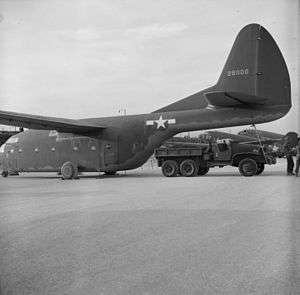Laister-Kauffman CG-10
| CG-10 | |
|---|---|
 | |
| CG-10A | |
| Role | Transport Glider |
| Designer | Laister-Kauffman |
| First flight | 1943 |
| Primary user | USAAF |
The Laister-Kauffman CG-10 was an American military transport glider aircraft developed during World War II.
Design and development
The development version was known as XCG-10. This version could carry 30 troops. It was accepted on October 4, 1943. The first test tow flight took place on November 6, 1943. The second version, XCG-10A, increased seating capacity to 42 and added a rear loading door.[1] Cargo capacity was up to 6 short tons (5.4 t).
The production version, CG-10A, had an initial order of 990 with the intention of being used for an invasion of Japan. 90 were on the production line when the program was cancelled. Laister-Kauffman considered fitting the planes with two Pratt & Whitney R-1830-92 engines but this plan never came to fruition.[1]
Specifications (CG-13A)
General characteristics
- Crew: 2 pilots
- Capacity: 42 troops
- Length: ()
- Wingspan: 105 ft (32 m)
- Height: ()
Performance
See also
Related lists
Operators
References
- 1 2 3 Heyman, Jos. "United States Military Aircraft: CG = Transport Glider (1941-1955)" (PDF). p. 12. Retrieved 3 September 2018.
- ↑ "What's New in Aviation". Popular Science. February 1945. p. 85. Retrieved 3 September 2018.